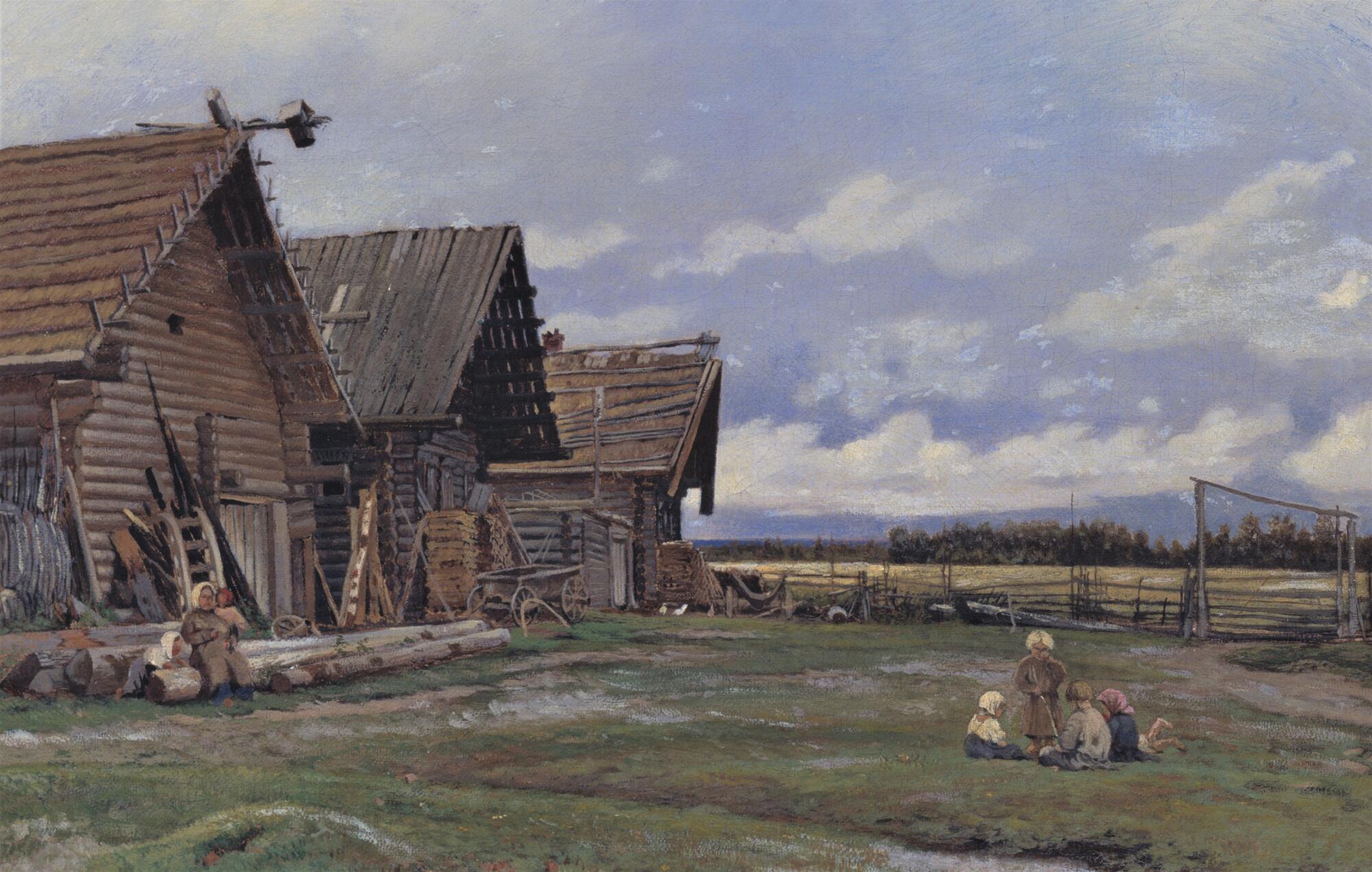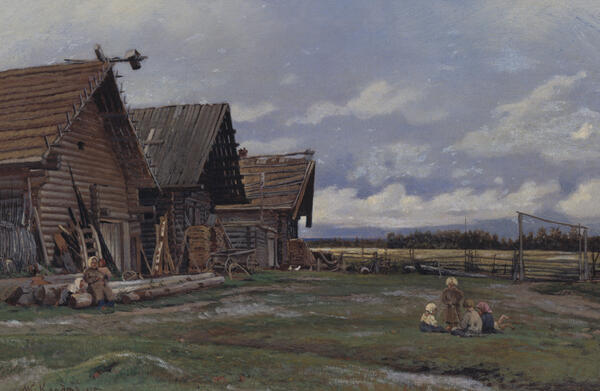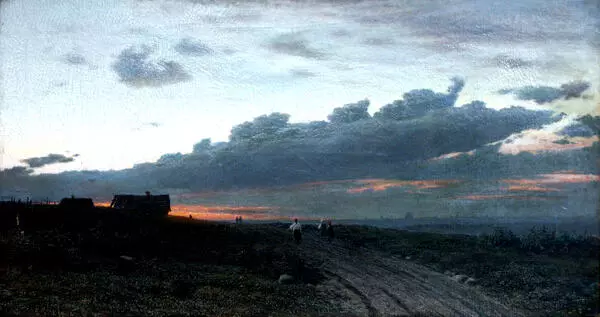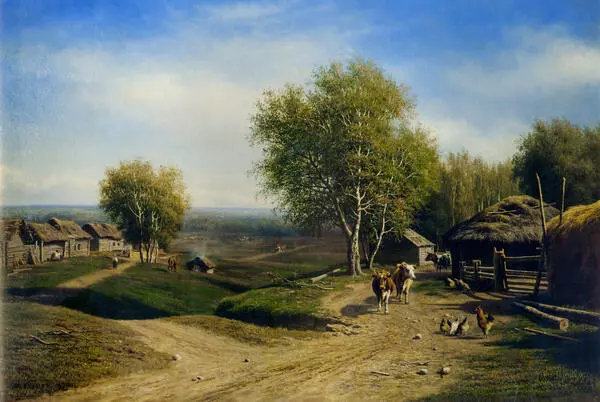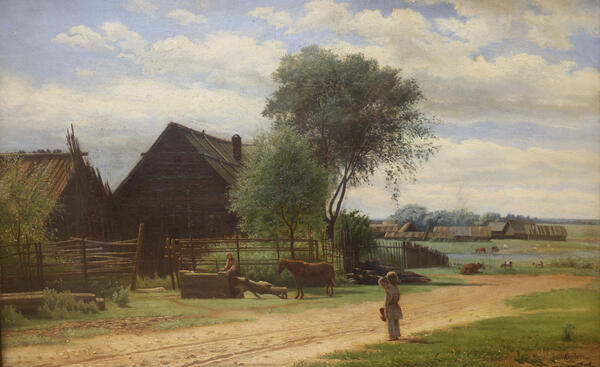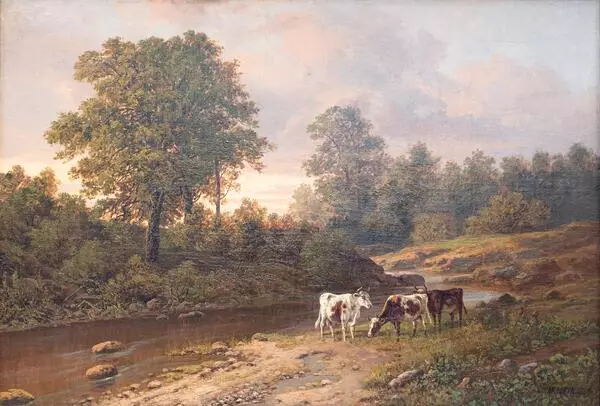Mikhail Konstantinovich Clodt baron von Jürgensburg — the nephew of a famous Russian sculptor and teacher Peter Сlodt — was one of the first Russian artists who combined genre scenes with an epic landscape.
Mikhail Сlodt’s grandfather was a combat general, Karl Gustaf Clodt von Jürgensburg, a German baron, a hero of the Patriotic War of 1812, an expert in geodesy and topography. He was awarded several orders and a golden sword “For Bravery” in recognition of his military merits. Karl Сlodt loved to draw; his sons also became interested in painting and eventually devoted their lives to art. Therefore, Konstantin Сlodt taught engraving classes at the Academy of Arts, and Peter became a famous sculptor. His equestrian sculptures stand on the Anichkov Bridge in St. Petersburg. Peter’s son Mikhail became a painter, his painting ‘The Sick Musician’ was purchased by Pavel Tretyakov for his future gallery.
Konstantin’s son, also Mikhail, was a famous landscape painter. In 1851–1858, he studied at the St. Petersburg Academy of Arts, after which he went on a state-funded trip abroad, worked in Switzerland and France. In 1861, Сlodt returned to Russia and received the title of academician for the paintings “Night View in Normandy” and “View of the Aa River”. The artist was interested in Russia’s nature and he began to travel all over the country.
Subsequently, Clodt became a founding member of the Association of the Wanderers (a group of Russian Realist painters), but he could not accept their rejection of the academic artistic method and left the association. After that, the artist was gradually forgotten.
Since 1873, Clodt taught landscape classes at the Saint Petersburg Academy of Arts. The class was going to be closed, but Clodt managed to defend it. The painter was the first at the Academy to introduce the practice of working from life into the program. Among his students were Nikolay Dubovsky, Julius von Klever.
Mikhail Clodt painted the ‘Village Landscape’, displayed at the exhibition, during his studies at the Academy; this is one of his smallest intimate paintings. The artist’s works were characterized by scrupulous realism, careful details, and mastery of promising solutions, rigor, and harmony of the composition. In his work, Clodt continued the artistic traditions laid down by Alexey Venetsianov, defended the importance of interest in the national landscape, as well as in the life and fate of the post-reform village, peasant Russia. Spatial effects were of particular interest to him.
People are an integral part of Clodt’s landscapes. Therefore, the characters of ‘Village Landscape’ became the peasant children playing. The artist also depicted modest village log houses, rickety fences, woodpiles, a carrying pole thrown near an empty farm cart. Realistic demonstration of rural life without embellishment and romanticization was Clodt’s primary artistic goal.
Mikhail Сlodt’s grandfather was a combat general, Karl Gustaf Clodt von Jürgensburg, a German baron, a hero of the Patriotic War of 1812, an expert in geodesy and topography. He was awarded several orders and a golden sword “For Bravery” in recognition of his military merits. Karl Сlodt loved to draw; his sons also became interested in painting and eventually devoted their lives to art. Therefore, Konstantin Сlodt taught engraving classes at the Academy of Arts, and Peter became a famous sculptor. His equestrian sculptures stand on the Anichkov Bridge in St. Petersburg. Peter’s son Mikhail became a painter, his painting ‘The Sick Musician’ was purchased by Pavel Tretyakov for his future gallery.
Konstantin’s son, also Mikhail, was a famous landscape painter. In 1851–1858, he studied at the St. Petersburg Academy of Arts, after which he went on a state-funded trip abroad, worked in Switzerland and France. In 1861, Сlodt returned to Russia and received the title of academician for the paintings “Night View in Normandy” and “View of the Aa River”. The artist was interested in Russia’s nature and he began to travel all over the country.
Subsequently, Clodt became a founding member of the Association of the Wanderers (a group of Russian Realist painters), but he could not accept their rejection of the academic artistic method and left the association. After that, the artist was gradually forgotten.
Since 1873, Clodt taught landscape classes at the Saint Petersburg Academy of Arts. The class was going to be closed, but Clodt managed to defend it. The painter was the first at the Academy to introduce the practice of working from life into the program. Among his students were Nikolay Dubovsky, Julius von Klever.
Mikhail Clodt painted the ‘Village Landscape’, displayed at the exhibition, during his studies at the Academy; this is one of his smallest intimate paintings. The artist’s works were characterized by scrupulous realism, careful details, and mastery of promising solutions, rigor, and harmony of the composition. In his work, Clodt continued the artistic traditions laid down by Alexey Venetsianov, defended the importance of interest in the national landscape, as well as in the life and fate of the post-reform village, peasant Russia. Spatial effects were of particular interest to him.
People are an integral part of Clodt’s landscapes. Therefore, the characters of ‘Village Landscape’ became the peasant children playing. The artist also depicted modest village log houses, rickety fences, woodpiles, a carrying pole thrown near an empty farm cart. Realistic demonstration of rural life without embellishment and romanticization was Clodt’s primary artistic goal.
